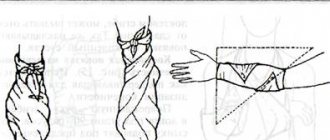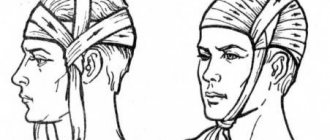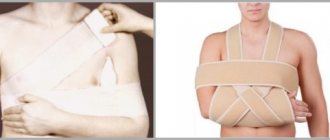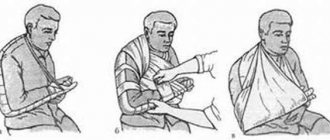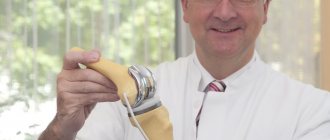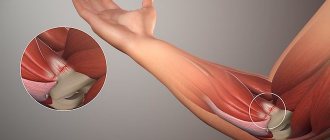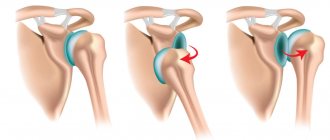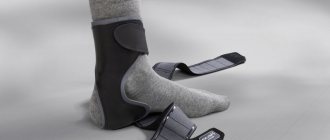The knee and elbow joints are the most mobile parts of the body. No one is immune from damage to these parts. Every person has had a bruise or cut on their knee or elbow at least once in their life. It is in such cases that a tortoiseshell bandage is used. It reliably fixes the dressing material. The bandage is made using a bandage or gauze. The natural material provides air access to the wound surface, protects the wound from infection, and retains medicinal substances well on the moving part of the body.
Types of tortoiseshell dressing
This bandage is applied only to the knee and elbow joints. Sometimes this type is used for damage or injury to the foot. This bandage is not used for application to other parts of the body.
A regular bandage does not stay on the moving area and slips off. This is due to the structural features of the knee/elbow. A bandage applied using the turtle method is very convenient if you need to bandage an injured knee or elbow. There are two types of tortoiseshell dressing - converging and divergent. The difference is how the bandaging begins. Otherwise, the techniques of both types are similar.
What is the fixation bandage used for?
Fixing bandages and bandages are becoming a mandatory method in the treatment of shoulder, elbow, knee and other joints.
We list all the areas of application of dressings:
- During the recovery period after arthroscopic and other operations.
- After injuries, for the purpose of rehabilitation and restoration of the former motor capabilities of articular elements, ligaments and muscles.
- Diseases of cartilage and ligaments - arthritis, tendinitis, arthrosis. Together with medications and physical therapy, joint fixators can reduce treatment time and reduce pain.
- Amateur and professional athletes use bandages to reduce the risk of spraining, bruising or tearing ligaments in the joint area. The fixing device in the variety is called a caliper.
Bandages on different joints and a bandage are usually fixed by an orthopedic doctor; also, to purchase a device in a salon, you must first consult a doctor. The specialist will be able to select the right type of retainer for the patient.
Basic Rules
When applying a bandage, a number of rules should be taken into account:
- The dressing should be done in a comfortable position, sitting or lying down. In this case, the injured limb should be in a relaxed state.
- During application of the bandage, the limb must remain motionless. It is best to use a stop, this position is the most comfortable.
- The correct choice of dressing material for bandaging. For the elbow, use a bandage ten cm wide, for the knee – fifteen to twenty cm.
- To bandage correctly, pass the bandage from left to right, holding the roller in your right hand from above.
- Pull the dressing material moderately, without creating excessive pressure on the skin and do not make the dressing too loose.
- The beginning of bandaging is two or three securing circles.
- If during this process the edges of the bandage (or gauze) begin to “wiggle,” you should wrap the bandage around the axis 180 degrees and continue bandaging, straightening it.
- The applied layer should overlap the previous one by half. Only in this case will the bandage be strong, provide reliable fixation and will not loosen.
- When completing bandaging, do not secure the bandage directly above the wound site and the moving part of the knee/elbow joint.
It is important to remember that the bandage should not cause discomfort to the victim. She must perform her functions (stop bleeding, fix the joint, hold medications, protect the damaged area from infection if it is an open wound) and be careful.
In what cases is a bandage prescribed?
The bandage is used to stop bleeding and prevent swelling of the damaged area. This bandage restricts movement in the elbow joint, and if applied correctly, the injury will heal more quickly.
A bandage is better than a bandage or glue because:
- the bandage does not cause an allergic reaction and after its application there are no visible marks on the skin;
- the gauze can be easily adjusted and pulled into the desired position;
- it is easy to regulate the pressure on the wound by loosening the bandage;
- The bandage tightly and reliably fixes the damaged joint.
Bandage
Before starting the procedure you need:
- cutting tool;
- brilliant green;
- dressing material.
Zelenka
Important! The doctor, turning to the patient, monitors his emotions. Having discovered an unpleasant expression on the part of the victim, the gauze is unwound and reapplied. If this is not done, numbness and swelling of the limbs may develop.
The injured area is treated with different types of bandage, because it all depends on the degree of damage. There are several known methods of bandaging, which differ in their technique. The following types of dressings are distinguished:
- turtle;
- circular;
- spiral;
- spica-shaped;
- creeping.
Let's look at each of them separately.
The purpose of the bandage is due to its excellent fixing effect.
Technique for applying a turtle bandage to the elbow joint
When falling, the elbow joint is the fulcrum. Therefore, cases of its damage are not uncommon. A regular bandage is inconvenient because it does not stay on the moving part and slips. Turtle wrap is best suited for dressing an injured elbow. For injuries close to the joint, it is better to use a converging turtle bandage. It will better fix the wound and the necessary medications. For damage located slightly below or above the elbow joint, a divergent bandage is used.
We apply convergent and divergent
How to make a turtle bandage for the elbow joint? Example of a convergent overlay:
- The injured arm must be bent at the elbow at an angle of ninety degrees.
- Then mentally divide the forearm into three parts.
- Then you should start applying the bandage from the lower part of the forearm.
- To secure the bandage, you need to make three initial turns.
- Perform ten circles in the form of eights around the arm, so that the bandaging ends in the middle of the elbow.
- Apply a fastening coil to the elbow.
- Secure the end of the bandage with a pin or staple.
A diverging tortoiseshell bandage is applied to the elbow joint in the same way, only in the opposite direction. That is, the bandage starts in the center of the joint with two or three turns. And then it diverges from the center up and down the forearm.
Advantages and disadvantages
In the case of surgical application of a bandage to the elbow or knee joint, in some cases a visit to the doctor can be prevented.
Emergency application of a bandage in such cases significantly reduces pain in the patient, prevents microorganisms from entering the wound and ensures rapid recovery.
If all the necessary stages of this manipulation are competently performed, the patient’s general condition will certainly be alleviated, and pain symptoms will also be significantly reduced.
As a rule, this dressing does not have any obvious disadvantages. The only thing that can be noted is a possible allergic reaction to the bandage.
Important to remember! When applying a turtle bandage, you must adhere to all hygiene rules (washed hands, use of gloves and sterile bandages, treating the wound with antiseptics).
Technique for applying to the knee joint
Who hasn't injured their knee? Unfortunately, this is a common occurrence.
In this case, you should immediately consult a doctor, but if this is not possible, then you should apply a bandage. It will prevent infection in case of injury, dislocation or severe bruise, and will help immobilize the damaged joint. Most often, in case of injury, a turtle bandage is applied to the knee joint. It is effective for wounds in and around the knee joint. How to make such a bandage? Now we'll tell you.
An example of applying a divergent tortoiseshell bandage:
- The previously injured knee must be bent at an angle of 100-120 degrees. For convenience, find support for the leg so that the joint is not strained and maximum comfort is ensured when applying the bandage.
- Applying the bandage begins from the middle of the joint. Two or three securing turns are made.
- Next, the rounds of the bandage are overlapped on the previous layer and diverge from the middle up and down in the form of a figure eight.
- The last turns are made above the knee joint, where two or three securing turns are made with a bandage.
- Then the end is secured with a pin or staple.
The technique for applying a turtle bandage to the knee joint is no different from how it is applied to the upper limb. The only difference is the material used. For bandaging the upper extremities, use a bandage ten cm wide, for the lower extremities - a bandage fifteen to twenty cm wide.
Common Knee Injuries
The knee joint in the human body is the largest and most complex compared to others. For various reasons, this joint receives injuries much more often than others.
Most injuries can be treated without surgery, but a serious knee injury may put the patient on the operating table.
Major knee injuries
These include: damage to the menisci and cruciate ligaments, bone fractures and hemoarthrosis (hemorrhages).
It is important to know that such injuries can be combined, for example, a torn meniscus and cruciate ligament.
Such injuries are mainly caused by unsuccessful falls from a height onto the legs and knees. Any damage to this joint may be accompanied by swelling, pain, hemorrhage, etc.
An effective method of immobilization is a scarf bandage. You can find out what application methods exist by following the link. About in what cases the application of modern pneumatic tires is recommended - what rules and nuances exist.
Foot bandage
How is a tortoiseshell bandage applied to the foot? Using the same method, a bandage is made for damage or inflammation of the ankle joint and sprained ligaments. When bandaging applied to the heel area, use a divergent bandage.
The algorithm for applying a turtle bandage to the heel area is the same as for the joints of the limbs.
Bandaging begins on the most protruding part, that is, on the heel. This is the most difficult part of bandaging.
Two or three initial rounds are done. After which they should be secured with one or two turns of bandage through the sole and on the back of the heel. Next, the bandage is applied as usual, figure eights are made with a bandage, spreading upward to the ankle and down to the foot.
Dislocations, sprains, bruises, joint inflammation. What is used?
In these cases, a tortoiseshell bandage is applied using an elastic bandage. The latter is made using stretch threads that provide a snug fit and tightening if necessary. A bandage is often used to limit mobility and create compression pressure that is comfortable for the patient. Sometimes it can be applied over an existing dressing. The application procedure is the same as using a regular bandage. The difference between elastic is that there is no need to twist it during bandaging. Because the stretch fibers provide a perfect fit. This bandage is attached using pins, staples or special plastic fasteners sold complete with the bandage.
Purpose of the ankle bandage:
- medicinal (for healing damage);
- compression (for sprained ligaments, tendons);
- fixing (used in sports medicine);
- protective (for an open ankle fracture).
This bandage will protect the injured ankle and speed up healing and recovery.
Required skill: apply a bandage
The technique of applying a turtle bandage is quite simple. The ability to do it at the right time can save someone’s life or avoid the fate of being crippled for the rest of their days. The most important thing in case of injury is first aid. After all, it is not always possible to immediately see a doctor. A properly made bandage will protect against infection, help fix the damaged joint and wait for the doctors to arrive. Of course, it is better that such a skill is not useful, but, unfortunately, no one is immune from this.
Benefit
What are the advantages of such a bandage:
- When using this dressing, there is a possibility that further medical assistance will simply not be necessary. The bandage will effectively help fix the position of the joint and restore its function.
- It relieves pain and soothes the joint.
- Protects the skin from penetration of harmful microorganisms.
- It has the property of quickly restoring damaged tissues.
In general, proper use of the bandage will allow the patient to quickly feel relief.
Turtle wraps come in different types. They are used depending on the type of damage and its severity.

